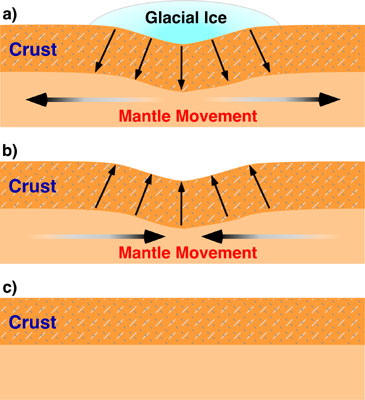


Igneous rock: A rock formed by congealing rapidly or slowly from a molten state.
Ignimbrite: An igneous rock formed by the lithification of volcanic ash and volcanic breccia.
Inclination: The angle between a line in the Earth's magnetic field and the horizontal plane; also a synonym for dip.

Index of refraction: The ratio of the speed of light in a vacuum to the speed in a material; this ratio determines the amount that light is refracted as it passes into a crystal.

Infiltration: The movement of groundwater or hydrothermal water into rock or soil through joints and pores.

Interfacial angle: The angle between two crystal faces of a crystal, characteristic of a mineral's symmetry.

Interior drainage: A system of streams that converge in a closed basin and evaporate without reaching the sea.

Intermontane basin: A basin between mountain ranges, often formed over a graben.

Intrusion: An igneous rock body that has forced its way in a molten state into surrounding country rock.

Intrusive rock: Igneous rock that is interpreted as a former intrusion from its cross-cutting contacts, chilled margins, or other field relations.

Ion: An atom or group of atoms that has gained or lost electrons and so has a net electric charge.

Isograd: A line or curved surface connecting rocks that have undergone an equivalent degree of metamorphism.

Isostasy: The mechanism whereby areas of the crust rise or subside until the mass of their topography is buoyantly supported or compensated by the thickness of crust below, which "floats" on the denser mantle. The theory that continents and mountains are supported by low-density crustal "roots."

Isotope: One of several forms of one element, all having the same number of protons in the nucleus, but differing in their number of neutrons and thus atomic weight.

_de_DSC05454.jpg)
No hay comentarios:
Publicar un comentario